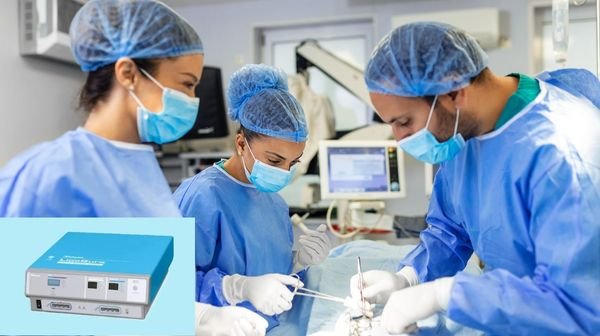Transform your life with advanced, pain-reduced hemorrhoid treatment
Dealing with piles can feel like living with a painful secret. You're not alone. Millions of people suffer from hemorrhoids, yet many delay treatment due to fear of surgery or long recovery times.
What if there was a better way? A surgical option that offers less pain, faster healing, and quicker return to normal life?
What Are Piles and When Do You Need Surgery?
Understanding Hemorrhoids
Piles, or hemorrhoids, are swollen blood vessels in your anal area. Think of them like varicose veins that occur in the rectum and anus. They're incredibly common – affecting nearly half of adults by age 50.
Types of Hemorrhoids
Internal Hemorrhoids
- Located inside the rectum
- Usually painless but may bleed
- Can prolapse (slip outside)
External Hemorrhoids
- Form under the skin around the anus
- Often painful and visible
- May become thrombosed (blood clotted)
When Surgery Becomes Necessary
Most hemorrhoids respond well to simple treatments. However, surgery may be needed for:
- Grade III or IV hemorrhoids that prolapse and won't stay inside
- Thrombosed hemorrhoids with severe pain
- Recurring hemorrhoids that don't respond to other treatments
- Significant bleeding that affects daily life
- Strangulated hemorrhoids (a medical emergency)
Traditional Surgery vs. Ligasure: The Evolution
Conventional Hemorrhoidectomy Challenges
Traditional surgery often meant:
- Longer operating times (25-30 minutes)
- Significant post-operative pain
- Extended recovery periods
- Higher bleeding risk
- Longer hospital stays
The Ligasure Revolution
Ligasure technology represents a major advancement. This bipolar electrothermal device combines pressure and radiofrequency energy to seal blood vessels while cutting tissue.
How Ligasure Surgery Works
The Technology Behind It
The Ligasure system is remarkably smart. It:
- Measures tissue resistance 3,333 times per second
- Delivers precisely calibrated energy
- Seals vessels up to 7mm in diameter
- Limits thermal spread to just 2mm
- Prevents unnecessary tissue damage
Duration: Typically 12-15 minutes (compared to 25-30 minutes with traditional methods)
Key Benefits of Ligasure Surgery
1. Dramatically Reduced Pain
Studies show Ligasure surgery results in significantly less post-operative pain, with patients experiencing a 2.07-point reduction on a 10-point pain scale on the first day after surgery.
2. Faster Recovery Time
Patients typically return to work 12.2 days after Ligasure surgery compared to 16.4 days with conventional methods – that's 4 days sooner!
3. Minimal Bleeding
The precise sealing action virtually eliminates bleeding during surgery. Blood loss averages just 11.5ml with Ligasure compared to 22ml with traditional surgery.
4. Shorter Surgery Time
Operating time is reduced from an average of 29 minutes to just 12.5 minutes, meaning less time under anesthesia.
5. Day Surgery Option
Over 90% of patients can go home the same day, avoiding overnight hospital stays.
6. Lower Complication Rates
Early complication rates are remarkably low at just 2.1%, with most issues being minor and easily managed.
Recovery Timeline and Tips
Week 1: Initial Healing
- Pain Level: Moderate, well-controlled with medication
- Activity: Rest, short walks, avoid lifting
- Diet: Soft foods, high fiber, lots of fluids
- Care: Sitz baths twice daily
Week 2: Improvement Phase
- Pain Level: Significantly reduced
- Activity: Light daily activities
- Work: Desk jobs may be possible
- Care: Continue wound care routine
Weeks 3-4: Near Normal
- Pain Level: Minimal to none
- Activity: Most normal activities
- Work: Full return for most patients
- Care: Regular follow-up visits
Success Rates and Long-term Outcomes
Impressive Statistics
95%
Success rate for eliminating hemorrhoids permanently
Long-term Benefits
- Recurrence Rates: Studies show lower recurrence rates with Ligasure compared to other modern techniques
- Quality of Life: Return to normal activities faster, reduced long-term complications, improved patient satisfaction scores
- Safety Profile: Long-term complication rates remain low at 5.3%, with most issues being minor and treatable
Who Is a Good Candidate?
Ideal Candidates
You may benefit from Ligasure surgery if you have:
- Grade III or IV hemorrhoids
- Failed response to conservative treatments
- Significant impact on quality of life
- Good overall health for surgery
- Realistic expectations about recovery
Potential Risks and Complications
Understanding the Risks
Like any surgery, Ligasure hemorrhoidectomy carries some risks. However, serious complications are rare (less than 2%).
Common (but minor) side effects:
- Temporary pain and discomfort
- Swelling around the surgical site
- Light bleeding for a few days
- Difficulty with first bowel movement
Recovery Success Stories
"I was amazed at how much less pain I had compared to what I expected. I was back to work in 10 days and feeling great!" - Sarah, 42
"The surgery was over before I knew it. Recovery was so much easier than my friend who had traditional surgery." - Michael, 38
"I wish I had done this sooner. The relief is incredible, and the recovery was manageable." - Patricia, 55
Making Your Decision
Questions to Ask Your Surgeon
- How many Ligasure procedures have you performed?
- What are your complication rates?
- What should I expect during recovery?
- How do you manage post-operative pain?
- When can I return to normal activities?
- What signs should prompt me to call your office?
 Book Appointment
Book Appointment

Leave a Reply
Your Email address will not be published